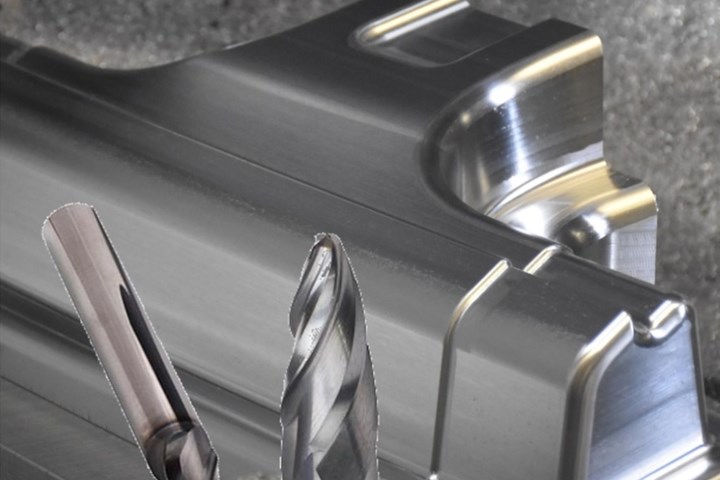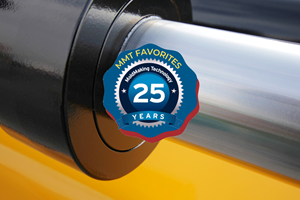Machining Webinar: How to Apply Accelerated Finishing Technology
Today the moldmaking industry has access to new tools and toolpath strategies that challenge traditional finish machining approaches.
Share
Read Next

Traditional finishing is the most time-consuming but most crucial segment of any machining project, and achieving a balance between surface quality and cycle time is always a challenge. So, if you want to learn how to lower finish machining cycle times by up to 80%, how to improve overall surface quality without added cycle time, and how to eliminate the compromise between cycle time and surface quality, then check out this webinar by Mastercam.
They say a picture is worth a thousand words, making a video worth even more, so I don't know what that says about this Mastercam webinar on finish machining? The dynamic images and videos really bring the advancements in finish machining to life for the viewer. Mastercam Partnership Program Manager Stas Mylek challenges traditional thinking when it comes to finish machining approaches and then breaks down the impact of cutters and toolpaths.
Key benefits of accelerated finishing:
- Fewer passes, shorter cycle time, flatter cusp height, higher surface quality
- Improved cutting edge utilization, wear pattern, tool life, and metal removal rate
- Reduced vibration
- Extended reach undercuts
Limitations of accelerated finishing:
- Applicable to mild curvature geometry and transitions
- Follow typical ball end ml finishing restriction
- Mindful of collision avoidance
- Apply the right tool to the right set of geometry and the right condition
Below are some of the attendee questions asked during the Q&A portion of the webinar after a rundown of several application examples:
- What tool libraries are available?
- Why would one use a tapered mill for milling a tapered wall if you could simply tilt the standard cylindrical-shaped mill parallel to the wall? I understand the benefit where the walls are too high, and you would collide with the holder. But otherwise surface would be better with a cylindrical mill parallel to the wall, wouldn't it?
- How do you set the stepover/step down for different points on the tool?
- Will it adjust the step over in a waterline finish path?
- How do I manage or figure out what the step-down and stepovers are?
- What is the most challenging part of using these new tool types and toolpaths?
- Is accelerated finish a "parameter" that you select in a given toolpath?
- Can these tools work on a three-axis machine, or Do these tools always need to be used with multi-axis motion?
- Would you set your tilt to automatic or a specific angle?
- What types of materials have you tested these in?
- Do these tools tend to have similar lifespans as ball end mills?
- What are the basic characteristics of a part or section of a part that's best suited to this type of cutting?
- Does it adjust the SFM for the different radius on the tool?
- Do you know if they are making circle segment tools for larger-scale tools/molds? These tools seem to be for smaller pockets. If they are, do you know which vendor is making them?
- Are these tools solely for metal tools?
- It seems like there are more of these new tools hitting the market. How do you make sure Mastercam can support them?
The bottom line is challenging your traditional approach to finish machining with new cutting tool and toolpath technology can help you achieve high surface quality and reduce cycle times.
To watch this webinar, click here. And to view all archived webinars, click here.
Related Content
Hands-on Workshop Teaches Mold Maintenance Process
Intensive workshop teaches the process of mold maintenance to help put an end to the firefighting culture of many toolrooms.
Read MoreMold Design Review: The Complete Checklist
Gerardo (Jerry) Miranda III, former global tooling manager for Oakley sunglasses, reshares his complete mold design checklist, an essential part of the product time and cost-to-market process.
Read MoreHow to Correctly Size a Hydraulic Cylinder
This week Randy shares steps for correctly sizing a hydraulic cylinder on a mold.
Read MoreLaser Welding Versus Micro Welding
The latest battle in finely detailed restoration/repair of mold materials.
Read MoreRead Next
How to Use Strategic Planning Tools, Data to Manage the Human Side of Business
Q&A with Marion Wells, MMT EAB member and founder of Human Asset Management.
Read MoreHow to Use Continuing Education to Remain Competitive in Moldmaking
Continued training helps moldmakers make tooling decisions and properly use the latest cutting tool to efficiently machine high-quality molds.
Read MoreAre You a Moldmaker Considering 3D Printing? Consider the 3D Printing Workshop at NPE2024
Presentations will cover 3D printing for mold tooling, material innovation, product development, bridge production and full-scale, high-volume additive manufacturing.
Read More.png;maxWidth=970;quality=90)












_300x250 3.png;maxWidth=300;quality=90)


.png;maxWidth=300;quality=90)







